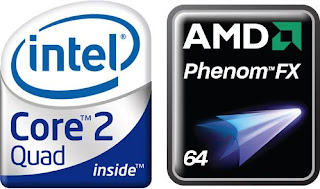Intel pays off AMD
 The box-office draw of the lawsuit between Intel and Advanced Micro Devices has been small but consistent. The companies have been embroiled in legal claims and counterclaims for many years. Now, the suits are apparently over, with Intel agreeing to pay US$1.25 billion to shut up its competitor. Talk about a letdown!
The box-office draw of the lawsuit between Intel and Advanced Micro Devices has been small but consistent. The companies have been embroiled in legal claims and counterclaims for many years. Now, the suits are apparently over, with Intel agreeing to pay US$1.25 billion to shut up its competitor. Talk about a letdown!
AMD has done a consistently good job of playing the role of the underdog. It has accused Intel of abusing its dominant position by paying computer manufacturers to be exclusively “Intel Inside.” AMD also made claims of intellectual property violations.
To settle those claims, Intel is writing AMD a check. In return, AMD is dropping its lawsuits, and the companies are entering into a five-year cross-licensing agreement.
We’ve seen this happen before. AMD sued Intel in the early 1990s on essentially the same grounds. Intel settled the lawsuit shortly thereafter.
What makes this latest settlement unfortunate, in my opinion, is that AMD claimed that Intel was harming consumers by suppressing competition in the microprocessor market. “On behalf of ourselves, our customers and partners, and consumers worldwide, we have been forced to take action,” wrote AMD chairman Hector Ruiz in 2005, when it launched its latest antitrust complaint.
It looked like AMD had a solid case. There was a lot of evidence provided showing how Intel allegedly intimidated computer manufacturers who strayed from an Intel-only product strategy, and that Intel’s actions indeed suppressed competition.
In what way does Intel’s payment of $1.25 billion to AMD provide relief to consumers? It doesn’t. What the settlement shows is that AMD’s motivation was greed, pure and simple.
This is the end of the line for AMD vs. Intel — for today. But next time AMD finds itself short on cash, we’ll undoubtedly see them back in the courtroom for a box-office sequel.
